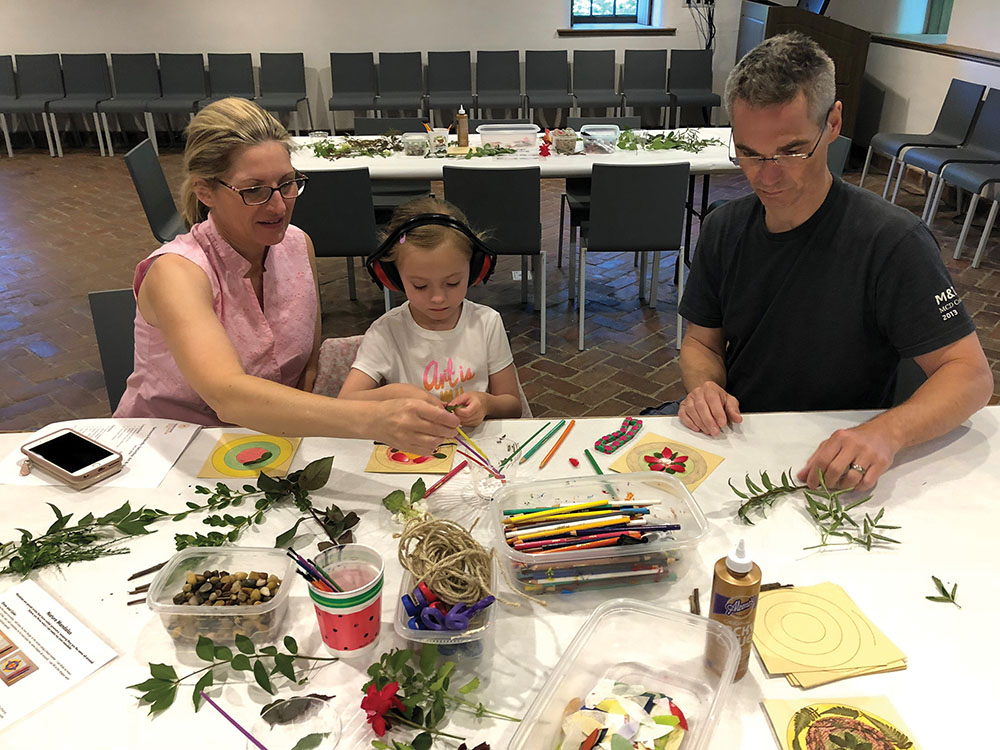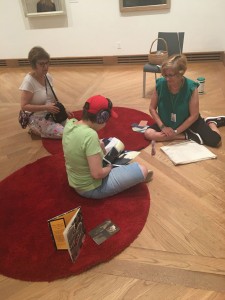
Everyone should experience art, but for children with autism or sensory-processing sensitivities, a trip to a museum or art gallery can be overwhelming. Fortunately, art museums in the Delaware Valley have developed programs and opportunities to make their galleries more accessible for kids of all abilities.
Sensory-friendly explorations at the Brandywine River Museum of Art
The Brandywine River Museum of Art in Chadds Ford, Pennsylvania, has been offering sensory-friendly events since 2017. Staff hold Sensory-Friendly Saturdays three to four times per year, and
the next one will take place Saturday, March 26.
The programs, designed for families with kids who have autism or sensory-processing sensitivities, provide a designated time to visit the museum before or after hours, hands-on gallery stations and art activities.
“These programs were created and are regularly evaluated by an advisory committee comprised of self-advocates, parents, therapists and educators,” says Laura Westmoreland, associate educator of adult and community programs at Brandywine.

During these programs, kids can use fidgets, noise-canceling headphones and sunglasses. Families can also request to borrow a Sensory-Friendly Family Pack that includes sensory-regulation tools and other activities anytime they visit the museum.
“Since museums are often enjoyed by families visiting together, a family’s ability to visit can be impacted by a member who has sensory differences or has difficulty with communication
and social skills,” Westmoreland says.
“We have found that by creating opportunities that are specifically designed to accommodate neurodiverse visitors, families are able to enjoy a relaxed outing during which they feel welcomed, safe and connected to other families.”
Families can find additional ways to prepare for a trip to Brandywine to make it more comfortable and appealing.
“Some families make a list of what they will do during their visit, such as visiting a gallery, dining at the cafe and checking out the gift shop,” Westmoreland says.
Additionally, the museum is next to Brandywine Creek, which provides another destination for kids to visit.
“Families may also take a break from visiting the galleries to enjoy our outdoor river trail or rest in our indoor seating area that overlooks the creek. Several books are available to enjoy (in this
area),” Westmoreland says.
Engaging, inclusive programs at the Philadelphia Museum of Art
The Philadelphia Museum of Art, where anyone younger than 18 receives free admission, offers various accessible programs for families with children on the autism spectrum or who have sensory-processing sensitivities.
The PMA hosts Sensory-Friendly Mornings on a quarterly basis. Families can explore the museum together before public hours, take a break in a low-sensory zone and participate in hands-on art activities. Like Brandywine, the PMA also has fidgets and noise-canceling headphones available for kids to use.
Additionally, the PMA for All App, which can be downloaded for free on the Apple App Store and on Google Play, can help families who have children on the autism spectrum to prepare for a day visiting the museum with the family.
A museum educator and an art therapist develop and facilitate the PMA’s sensory-friendly programs with support from occupational therapy student volunteer teams.
“Sensory-Friendly Mornings allow families to bring children with unpredictable behaviors into a judgment-free environment and perhaps connect with other families in similar situations,” says
Leigh Dale, the PMA’s coordinator of family programs and events.
She notes how important it is to have programs that make art appreciation available to everyone in the family.
“Access to the arts and artistic expression is key for every child, regardless of how they learn,” Dale says. “There is value to both specialized programs for kids with specific needs and to making general family programs more inclusive and welcoming to children on the autism spectrum.”
The PMA also welcomes children on the autism spectrum or with sensory-processing sensitivities to all programs beyond the Sensory-Friendly Mornings activities.
“Visitors on the autism spectrum shouldn’t be limited to just these times to enjoy the museum. We try to make all family programs inclusive by offering multiple modalities of engagement and open-ended exploration,” Dale says. “If a child is sensitive to the sensory input of an art material, we likely have an alternative on hand to swap it out.”






